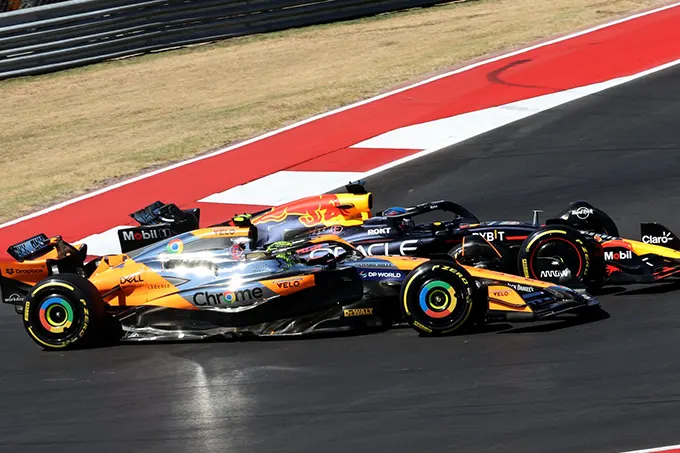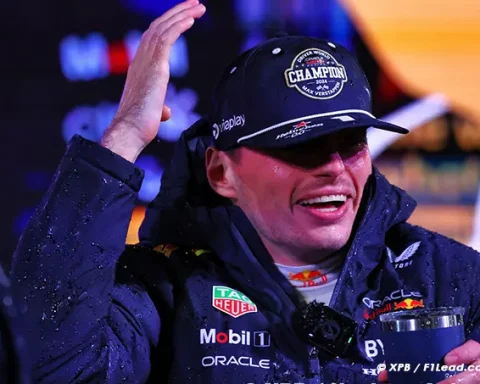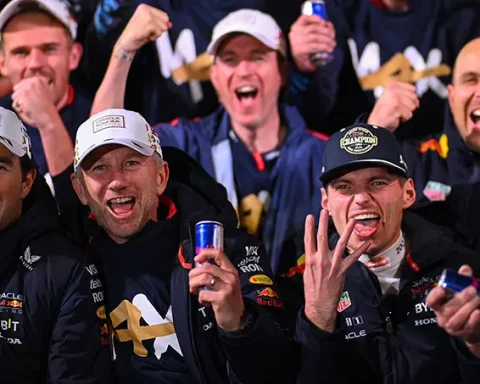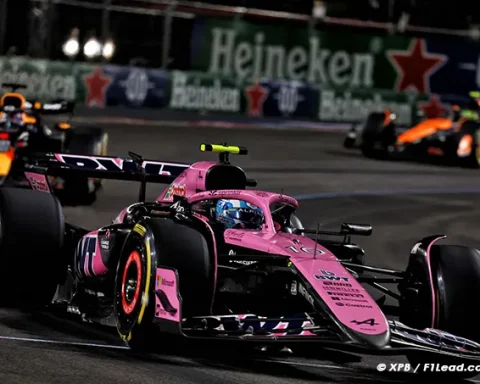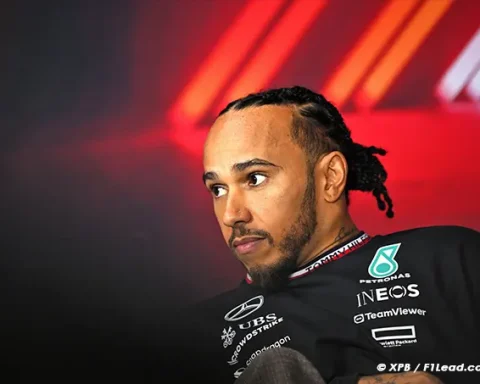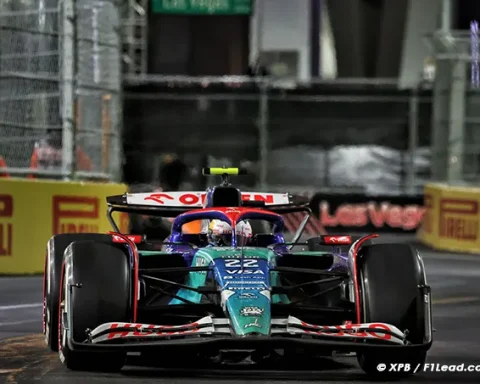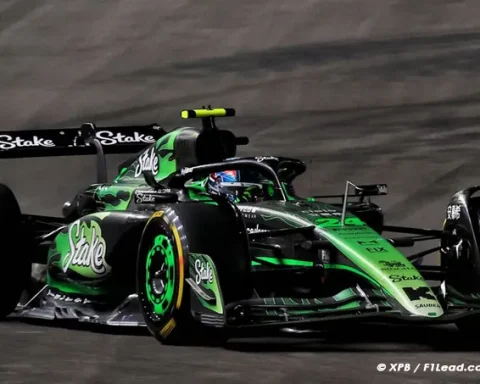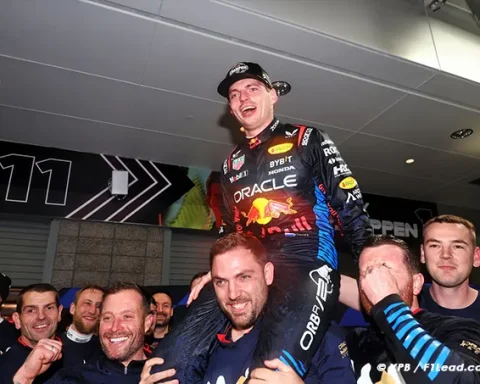The FIA faces fresh criticism after another contentious decision on track limits during the Austin Grand Prix. Controversy continues…
The recent United States Grand Prix in Austin has reignited debate over the consistency of Formula 1 stewards regarding track limit enforcement, following a controversial overtaking manoeuvre involving Lando Norris and Max Verstappen in the closing laps.
Norris was handed a five-second penalty for overtaking the Red Bull outside the track limits, a decision that has divided the paddock. Some believe the penalty was unfair, especially considering Verstappen also left the track while defending his position and forcing Norris off the circuit.
A clarification of FIA rules… that clarifies nothing
This controversy is reminiscent of the 2021 Brazilian Grand Prix clash between Verstappen and Lewis Hamilton, where similar defensive moves by the Red Bull driver sparked criticism. On that occasion, the Dutchman was not penalised.
Since then, Formula 1 has introduced new “guidelines” on driving standards, intended to clarify the rules for drivers. These guidelines are set to be incorporated into the FIA’s International Sporting Code in 2025, becoming a reference across all disciplines.
The goal of these rules was to provide greater clarity for drivers, but the incident at Turn 12 in Austin seems to have only added to the confusion. In short, nothing has been resolved; if anything, the situation appears murkier.
A major point of contention surrounding Norris’s penalty lies in the fact that Verstappen also left the track, making the incident more ambiguous than if the Red Bull driver had remained within the limits. While Norris didn’t meet the criterion of being fully alongside at the apex, questions remain about Verstappen’s defence.
According to the guidelines: “If, when defending a position, a car leaves the track (or cuts a chicane) and returns in the same position, this will generally be considered by the stewards as a lasting advantage, and consequently, the position must generally be relinquished, in accordance with the rules. It will be at the sole discretion of the stewards to determine if a driver is ‘defending a position’.”
This raises a legitimate and somewhat paradoxical question: if Norris had stayed on the track and abandoned his overtaking attempt, could it be that Verstappen (if he had remained off track) would have had to give his position back to Norris? In other words, should Lando Norris have not attempted an overtake in order to succeed in overtaking?
“I thought that normally, if neither of you stays on the track, it becomes a bit unclear… It reminds me of Brazil [2021]. I think if you can stay on the track, then fine, you’ve won,” reflected Williams F1 driver Alexander Albon.
“What’s incorrect is what Max did—defending his position while leaving the track and effectively maintaining his position, which isn’t right. He went off track while defending, overexploited, made an error, and therefore gained an advantage from it,” explained Lando Norris, who, of course, was both participant and judge in this case.
The penalty seems all the more unjust given that in their decision, the FIA stewards noted that Lando Norris “had no choice but to leave the track due to the proximity of car 1 (Max Verstappen), which had also left the track.”
Is it better to dive for the apex without hesitation?
Another point of contention revolves around the apex: the driver who reaches it first is considered to be “ahead” of the other car and therefore in a stronger position according to FIA rulings.
But this increases the temptation for a driver to “dive” towards the apex, as noted by Andrea Stella.
“Using the front of the apex as a reference point to interpret an overtaking manoeuvre is not the relevant part,” explained Stella, McLaren F1’s team principal.
“I think the car defending simply dives towards the apex.”
“We reviewed the footage multiple times. Max Verstappen’s car goes straight, leaving the track just as much as Lando, giving Lando no chance to complete the move.”
“Both cars go off the track. So, in my view, if there’s any advantage to be gained, both cars gained it. For us, the manoeuvre was at least neutral.”
However, this approach doesn’t always seem to be applied consistently. A clear example is Oscar Piastri, who was penalised for forcing Pierre Gasly off track at Turn 12 during the Austin sprint, even though he himself remained on the circuit.
“If you look at my penalty in the sprint, it was almost an exact replica of what happened between Max and Lando, but I stayed on the track and still got penalised. So no, it’s not very clear,” remarked Piastri.
The only consistency is the inconsistency of the stewards…
The incident between Norris and Verstappen has once again highlighted the accusations of a lack of consistency in the stewards’ decisions. Even the drivers are struggling to understand why seemingly similar incidents are judged differently. The only consistency seems to be inconsistency…
“It feels like the rules keep changing, because I find it pretty inconsistent compared to what happened in Austria, where Max wasn’t penalised for going off the track and gaining an advantage,” Lando Norris continued to lament.
Indeed, at the Red Bull Ring this year, Verstappen wasn’t penalised, despite going off track to maintain his position against Norris, who had managed to reach the apex first.
Mercedes boss Toto Wolff also criticised the lack of clarity in the criteria used for judgements, expressing his frustration over the penalty imposed on George Russell for pushing Valtteri Bottas off track, stating:
“Everyone is fighting hard, but for me, the decision against George was inexplicable.”
“There’s always someone who is happy and someone who isn’t, but we need to try to understand if there are certain patterns in the decisions, and if they align with similar situations.”
It should be noted, however, that George Russell failed to meet the guidelines by not reaching the apex first, which meant he was required to leave space for Bottas on the outside.
Could the incident in Austin prompt the FIA to reconsider its arbitration system and decision-making methods? Perhaps even to appoint permanent stewards? Once again, Formula 1 finds itself under scrutiny for regrettable reasons, with the battles on track seemingly overshadowed by the issue of track limits.
- You may also like>One-Stop Gamble Pays Off as Pirelli Defies the Odds
- Also make sure you follow us on social media>Facebook and>Twitter
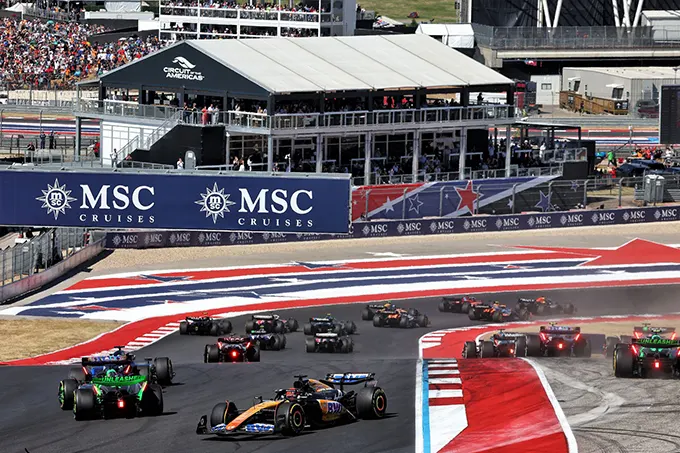
Formula 1 Controversy Resurfaces: FIA’s Track Limits Under Fire Formula 1 Controversy Resurfaces: FIA’s Track Limits Under Fire. F1 2024 Formula 1 Controversy Resurfaces: FIA’s Track Limits Under Fire
